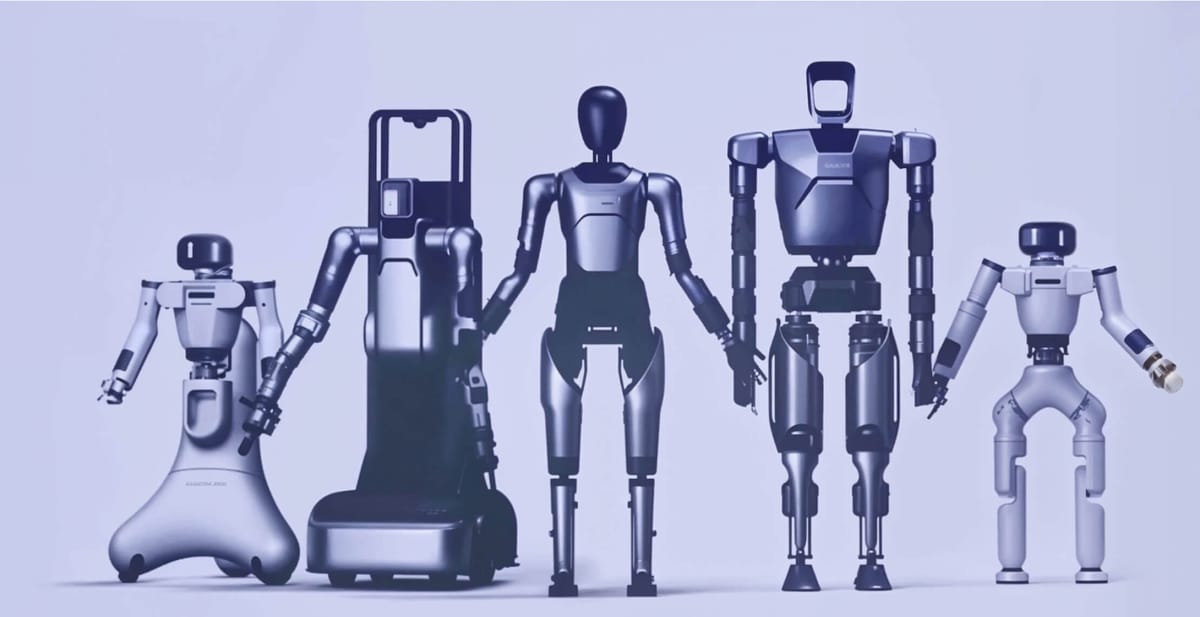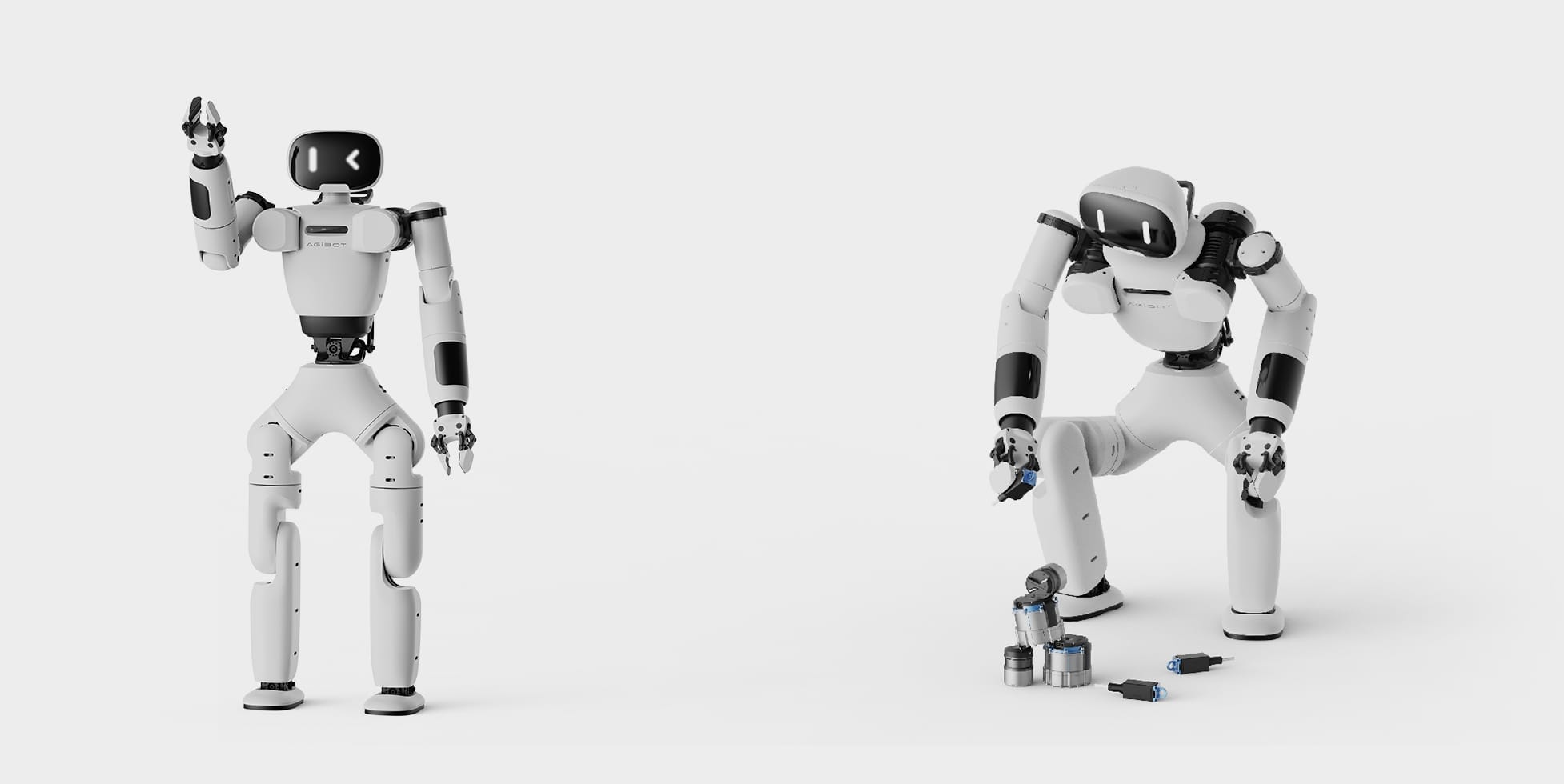
Zhiyuan Robotics, the startup founded by former Huawei "genius youth" Peng Zhihui, unveiled five new commercial humanoid robot models during the “Zhiyuan Expedition Commercial Sailing” 2024 New Product Launch Conference. The company also announced plans to open-source key technologies and datasets to accelerate industry development.
Zhiyuan introduced two new product families designed to cover a wide range of commercial applications:
Expedition Series: The Expedition series consists of three robots tailored for different industrial and service roles.

The Expedition A2 is an interactive service robot designed for customer-facing environments like exhibition halls, reception desks, and business consultations. Standing at 169 cm and weighing 69 kg, it features over 40 degrees of freedom for natural movements and uses a large language model for voice interaction and multi-modal information processing. It can carry loads of up to 1 kg, walk at a speed of 1 m/s, and operate autonomously for 2 hours. During the event, the A2 served as the host, demonstrating its ability to perform light work tasks while interacting seamlessly with attendees.
The Expedition A2-W is a flexible manufacturing robot built for tasks such as grabbing, placing, and handling objects in industrial settings. Its bionic dual-arm design, each with 7 degrees of freedom, enables it to operate in a highly precise manner, making it suitable for complex manufacturing tasks. The A2-W also integrates sensors for real-time perception and features modular algorithms that continuously optimize its operation skills through data accumulation.
The Expedition A2-Max is a heavy-duty robot still in development. Standing at 175 cm and weighing 85 kg, this robot is designed for handling tasks like palletizing. It can carry heavy objects of up to 40 kg with its 19-degree-of-freedom industrial-grade dexterous hands and powerful motor-driven joints. The A2-Max is expected to excel in physically demanding environments, thanks to its high torque and flexibility.
Lingxi Series: The Lingxi series features two robots designed with modularity and open-source development in mind.

The Lingxi X1 is a fully open-source robot with a modular design, 34-44 active degrees of freedom, and a height of 130 cm. Weighing 33 kg, the X1 is lightweight yet capable, supporting loads of up to 3 kg per arm. It is built for customization, allowing developers to leverage its open-source framework to create a wide range of applications in interactive services or light work tasks.
The Lingxi X1-W is optimized for data collection, serving as a low-cost, high-reliability option for gathering large-scale datasets for training embodied AI models. It shares many of the X1’s capabilities but focuses on providing a more economical solution for businesses involved in large-scale data acquisition.
In addition to these new products, Zhiyuan outlined its progress in four key technological domains:
- Power: Upgraded PowerFlow joint modules with improved performance and reliability.
- Perception: Integrated depth cameras, LiDAR, and panoramic vision for enhanced environmental awareness.
- Communication: Developed AimRT, a high-performance framework that will be open-sourced in September.
- Control: Combined model-based and learning-based algorithms for improved motion control.
The company also introduced AIDEA, a comprehensive embodied AI data system for collecting and processing robot interaction data. This system is expected to facilitate the ongoing development of more generalized robotic capabilities.
A significant portion of the conference highlighted Zhiyuan Robotics’ commitment to advancing embodied intelligence. The company presented a forward-looking technology roadmap for embodied intelligence, which it has categorized into five stages (G1-G5). The roadmap outlines the company’s vision for the evolution of intelligent robots from basic automation (G1) to highly generalized, autonomous robots capable of handling a wide range of tasks (G5).
The company claims to have made progress in G2 (generalizable atomic skills) and G3 (end-to-end task learning) stages, developing zero-shot and few-shot capabilities for tasks like pose estimation and grasping.
To top things off, Zhiyuan Robotics announced a series of open-source initiatives aimed at accelerating innovation in the embodied intelligence space. The company says it will open-source its high-performance communication framework, AimRT, by the end of September. During this period, it also plans to release the "entire stack" of the fully open-source Lingxi X1.
Zhiyuan also previewed the release of a substantial dataset, including over a million real-world data entries and tens of millions of simulated data entries, all set to be made available in the fourth quarter of this year.
The impressive launch underscores Zhiyuan’s transition from research and development to commercialization in just over a year. The company is now exploring practical applications of its robots in various industries, including manufacturing, data collection, and interactive services. It is partnering with companies like Joyoung, Digital China, and iFlytek on commercial applications. It's also collaborating with research institutions on large language models and robot operating systems.
Zhiyuan aims to ship over 300 robots in 2024, including about 200 bipedal and 100 wheeled models. Mass production is slated to begin in October.

